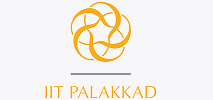Course Title and Code
Nanoelectronics for Circuits and Systems (EE5009)
Programme
M.Tech
Course Credit
3-0-0-3 (Lecture-Tutorial-Practical-Total Credits)
Primary Course Category
PMT
Prerequisite Course
Nil
Consent of Teacher
Not required
Course Content
| Sl. No. | Topic | Lecture Hours |
|---|---|---|
| 1 | Introduction and Fundamentals: Equilibrium carrier concentration; intrinsic and extrinsic semiconductors; Band model; Recombination-generation; Semiconductor equations: carrier transport, continuity and Poisson equations, boundary conditions. | 12 |
| 2 | MOS junctions and transistors: Metal-oxide-semiconductor (MOS) junction: C-V characteristics, threshold voltage, body effect; MOS field-effect transistors (MOSFETs): characteristics and modelling; basic planar Complementary MOS (CMOS) process flow. | 7 |
| 3 | CMOS scaling: Overview of International Roadmap for Devices and Systems (IRDS); Moore’s law, short channel effects and solutions to overcome it; modern day MOSFETs. | 8 |
| 4 | Memory technologies: Overview of 3D crossbar array; scaling of memories; volatile Dynamic Random Access Memory (DRAM): design of single DRAM cell; non-volatile memories: flash memory; Emerging memory technologies. | 7 |
| 5 | Compact modeling: Introduction to compact modeling for circuit simulation; overview of BSIM MOSFET model; sample transistor process design kit (PDK). | 8 |
| Total | 42 |
Learning Objectives
This is an introductory course in the area of device design and modeling, as applied to modern transistor-based circuits and systems, with a focus on devices for computing and memory applications. The objective of this course is to give the students a flavour of the challenges in the design of ultra-scaled transistors; so that they will be able to appreciate the need for understanding device behaviour, in order to analyse the performance of circuits and systems. Students will also be introduced to transistor process design kits, and their use in electronic system design.
Learning Outcomes
- Understand the behaviour of MOS-based devices, and have an overview of the processes involved in the fabrication of integrated circuits.
- Analyse the impact of device scaling on the performance of computing and memory systems.
- Appreciate the role of device modeling in order to facilitate circuit and system design.
Teaching Methodology
Classroom lectures
Assessment Methods
Written examinations/quiz, continuous assessment
Text Books
- T. A. Fjeldly, T. Ytterdal, and M. S. Shur, “Introduction to Device Modeling and Circuit Simulation,” Wiley-Interscience, ISBN-13: 978-0471157786.
- Y. Taur and T. H. Ning, “Fundamentals of Modern VLSI Devices,” Cambridge University Press, ISBN-13: 9780511601538.
- B. G. Streetman and S. Banerjee, “Solid State Electronic Devices,” Pearson Education India; Seventh edition (2015), ISBN-10: 9332555087, ISBN-13: 978-9332555082.
References
- International Roadmap for Devices and Systems: irds.ieee.org.
- Y. Tsividis, “Operation and Modeling of the MOS Transistor,” The Oxford Series in Electrical and Computer Engineering, ISBN-13: 978-0195170153, ISBN-10: 0195170156.
- R. F. Pierret, “Semiconductor Device Fundamentals,” Pearson 2nd edition, ISBN-10: 0201543931, ISBN-13: 978-0201543933.
- N. Bhat, S. A. Shivashankar, and K. N. Bhat, “Nanoelectronics: Devices and Materials,” NPTEL video lectures.
- S. Karmalkar, “Solid state devices,” NPTEL video lectures.
- M. A. Alam, “Principles of Semiconductor Devices”.
